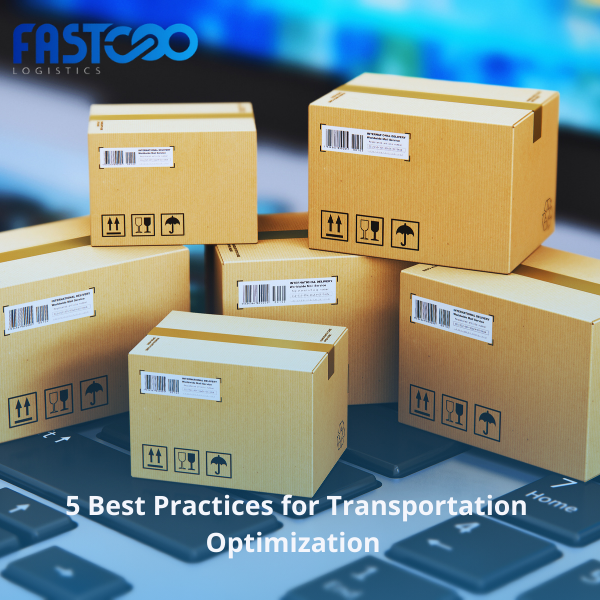5 Best Practices for Transportation Optimization

Transportation optimization is an important matter that business owners should pay attention to, especially since transportation costs represent a significant proportion of business costs. Optimizing transportation will help reduce transportation costs, as well as simplify supply chain operations across geographies, and can help transportation management systems effectively in saving time during transportation and speeding up that process, thus reducing delivery delays while accelerating the time allotted for product delivery, and in this article we will show you 5 Best Practices for Transportation Optimization.
Transportation optimization
Before we talk about the best practices for Transportation Optimization, we will first need to know what is meant by Transportation Optimization.
It means analyzing shipments and transportation rates as well as restrictions on loading goods, what is the total freight spending and how you can make your transportation networks more efficient.
Best transportation Management Optimization Practices
In order to make your transportation networks more efficient, and improve transportation, you need to follow transportation management improvement practices.
Which will reduce your transportation costs and make the process of transportation and shipping products faster and less expensive, here are 5 Best Practices for Transportation Optimization:
1. Shipment Pooling
The first best practice that you can follow for Transportation Optimization Management is the Shipment Pooling that you submit.
If you have several shipments for the same destination or geographical area, you can combine them into one shipment.
And all of this will positively affect the reduction of transportation costs, by consolidating all orders in one waybill, as well as clearly saving time and effort.
2. Shipment Aggregation
Shipment Aggregation is meant to attempt to create one shipment but for multiple orders, which will originate from the same shipper for the same destination as well as the same day but each shipment will be released from them separately.
This will be more efficient as it will reduce transportation costs as well as help you get the best prices and overcome supply chain disruptions.
3. Shipment Consolidation
The third transportation improvement management best practice is Shipment Consolidation, which will help you take advantage of multimodal transport.
Shipment Consolidation can also help you take advantage of long distance LTL when shipments have little variation in their delivery schedules.
All this will improve transportation management, thus reducing costs and significantly speeding up the process of shipping and delivering orders.
4. Continuous Moves
One of the best practices of Transportation Improvement Management is Continuous Moves, a solution that will allow you to reduce your mileage.
To be able to use Continuous Moves solutions you need to consolidate individual shipments, which will eventually reduce the pricing of the lanes and thus operate them at a lower rate.
All of this will reduce your transportation costs, which will also make you more profitable, as a result of avoiding empty miles.
5. Cross-Docking Strategies
Sometimes LTL shipping is long range in nature, but one solution to that problem is Cross-Docking Strategies, which will help you increase the distance charged at lower truckload rates, one of the best practices for Transportation Optimization.
Route Optimization
And speaking of Transportation optimization, we will also need to clarify what Route optimization is, especially as it is closely related to Transportation optimization.
Route optimization is intended to determine the most cost-effective route to rely on during the transportation process.
That route must include many factors that increase the efficiency of the delivery or transportation process, such as the number and locations of all required stopping points on the route.
TMS Optimization and the Driver Shortage
Transportation Management System (TMS) is a logistics platform that uses technology to help companies plan, implement and optimize the movement of goods, both incoming and outgoing.
TMS helps you to ensure that the shipment process complies with the requirements with the availability of the necessary documents, and is an intelligent transportation system solution.
Optimizing TMS can help you provide visibility into day-to-day transportation, information and documentation about companies’ compliance requirements, and also processing driver shortages.
This ensures timely delivery of shipments and goods, simplifying the shipping process, and making it easier for companies to manage and improve transportation processes, whether by land, air or sea.
Also, Optimizing transportation helps address a variety of supply chain issues, which will effectively affect your transportation costs.




